We may earn revenue from the products available on this page and participate in affiliate programs. Learn More ›
IN THE People’s Republic of Portland, every other block features an artisanal something—furniture, beer, food, soap…you name it. Strip away the earnestly hip Victorian-style waxed mustaches and factory-ripped jeans coated in bicycle grease, and you find a knife culture that predates cool, predates even the hippies who settled in the area in the 1960s. In fact, blade culture here goes back to the days of the Oregon Trail.
There are more knife companies Oregon, in the Portland area, than in any other state in the Union. It’s a thriving industry, with manufacturers employing thousands of workers alongside smaller outfits that employ only a few. Put it all together and you’ve got the knife capital of the USA.
The Pioneers
It’s spring, and I take a road trip around Portland for a “tour de knives,” visiting Leatherman, Gerber, Benchmade, and a couple of mom-and-pop shops. Since this is Portland, I expect some rain, but I land at the tail end of a record stretch of precipitation: 145 days and counting. It has been raining every day since October 1. Everything outside is jungle green and saturated. I have Gore-Tex, hot coffee, and a hard-top, so the rain doesn’t affect me much. But as I look out on the silty and swollen Willamette River running through Oregon City, just south of Portland, I recall how Lewis and Clark wintered 100 miles west of here on the coast.
In 1800s Oregon, the homesteaders who made it to the end of the Oregon Trail in Oregon City survived cholera, runaway wagons, hostile locals, hypothermia, scurvy, and a host of other perils. Many were part of a wagon train, but others took to the trail on their own. Once they made it to Oregon, some headed south to California, but many stayed to work the vast timber stands and thriving salmon fisheries in the western part of the state. To succeed in either occupation required an edge—a very sharp edge. Two men in particular saw that as an opportunity.
Read Next: The Best Hunting Knives of 2023
In the early 1900s, Henry Brands was a traveling salesman cruising the Northwest in his Model T. He sold hardware, including knives, which he soon realized were of a poor quality. He worked with a local metalsmith to create a hardier, sharper knife, complete with a scoop at the back. It was a hit, and soon Brands formed Coast Cutlery, building knives for lumberjacks, cooks, and fishermen throughout the West. The company still has offices in Portland, but its knives are now produced overseas.
While Coast grew out of necessity, another knife company was being born out of the simple act of giving.
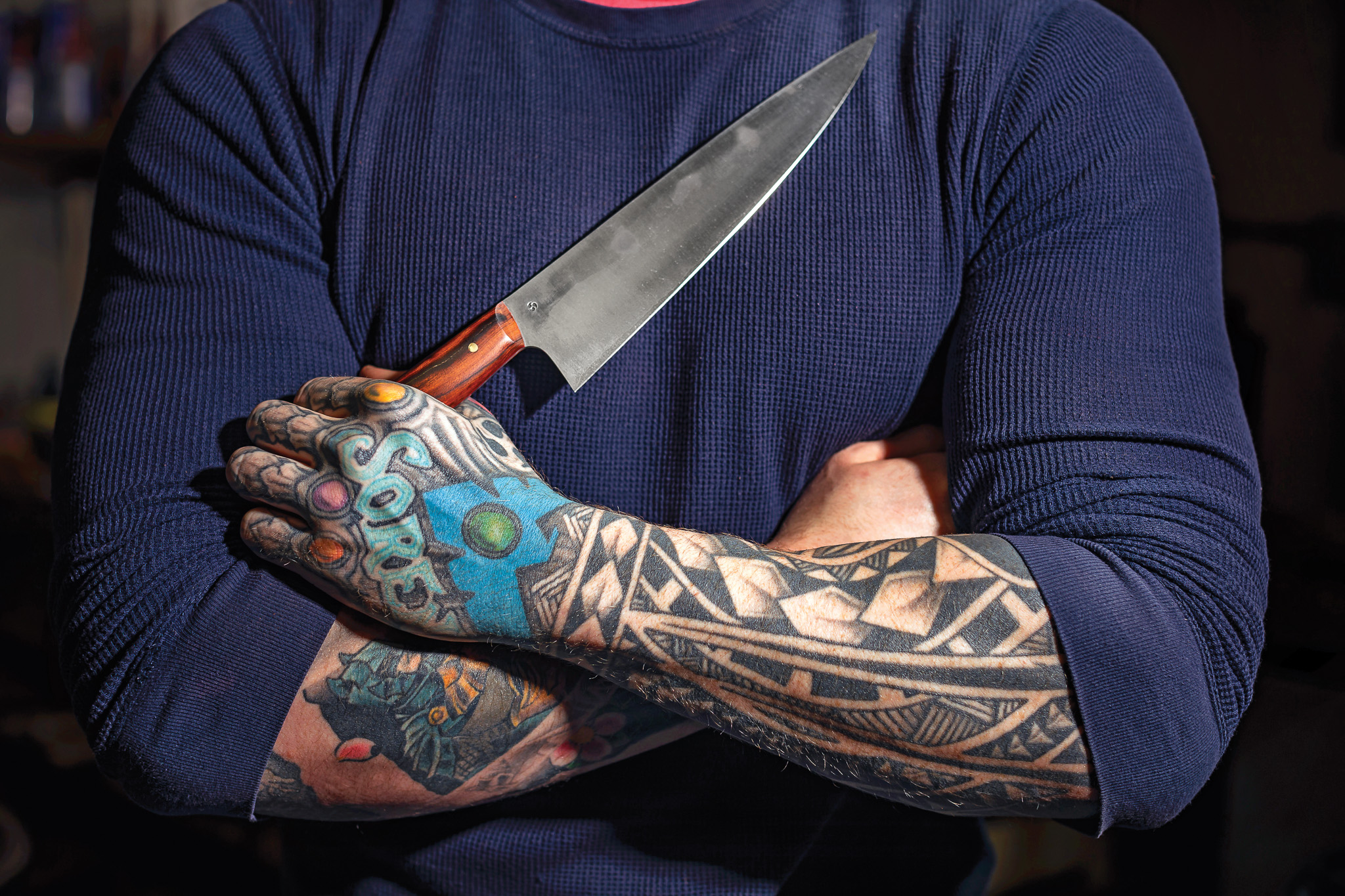
Like Brands, Joseph Gerber didn’t start out as a knife man—his business was advertising. And any successful businessman reminds his clients how much their business is appreciated, which is why Gerber would send his clients carving knives made by Portland bladesmith David Murphy. His clients were so impressed by the knives that they wanted to get more of them to give away as gifts themselves.
Gerber saw an opening and founded his eponymous company in 1939. Since then, the company has been purchased by the Finnish cutlery company Fiskars, but not before it spawned more than a few knife makers who went on to create Portland companies of their own. Al Mar and Pete Kershaw first worked at Gerber. Kershaw employees then spawned Columbia River Knife and Tool (better known by its acronym, CRKT), headquartered nearby in Wilsonville. If Coast was the seed for Portland’s knife culture, then Gerber grew the roots. And though not a direct Gerber spinoff, Leatherman is headquartered in Portland, employing around 500 and producing around 11,000 tools each day.
“All this infrastructure to support the knife industry was already here, thanks to Gerber. You can credit them with that,” says Vance Collver, a 43-year-old employee with Benchmade, whose headquarters and manufacturing facility are based in Oregon City.
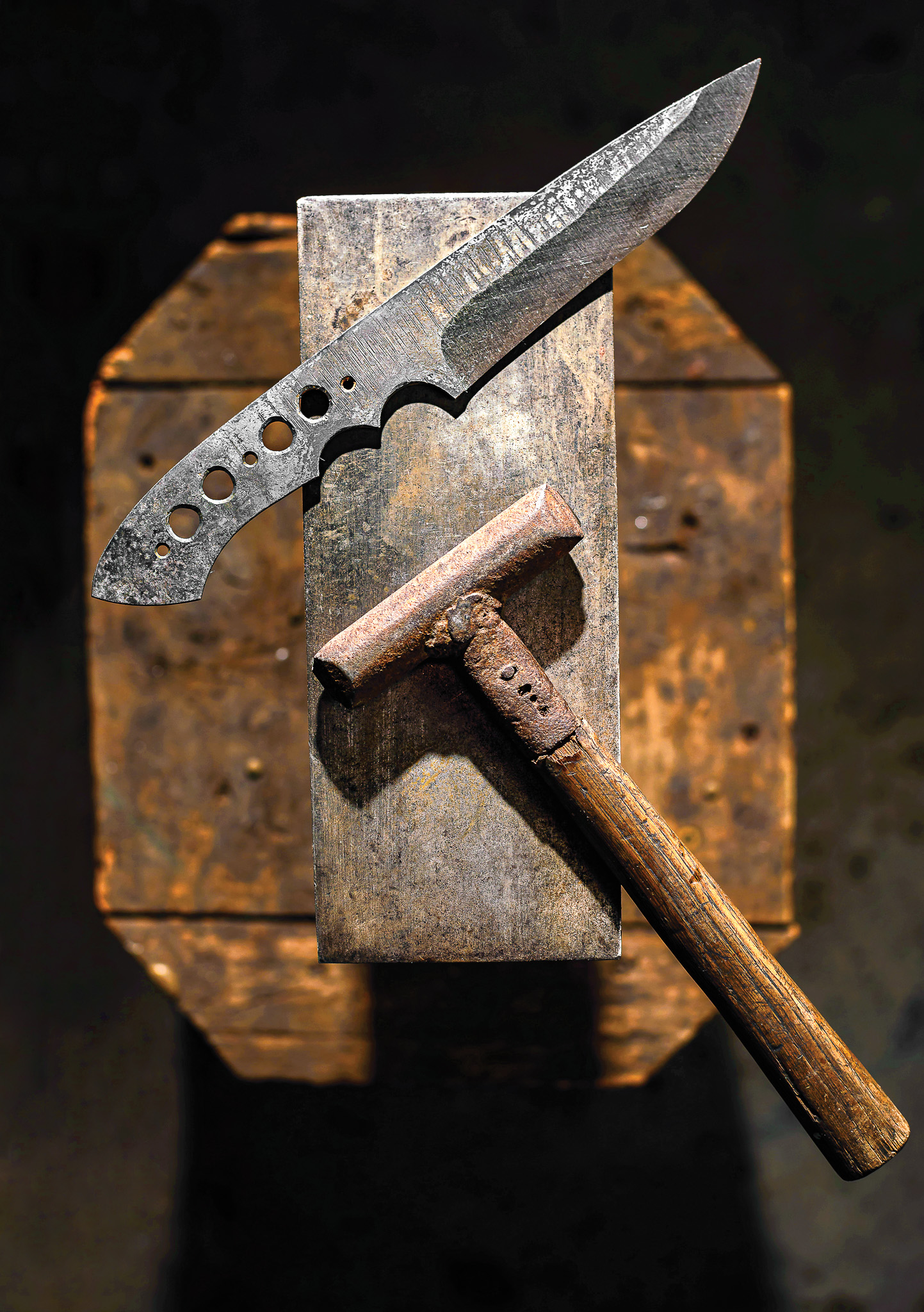
Investing Back
With nothing more than a high school diploma and a dead-end pizza job, Collver knew decades ago that he wanted to make knives. He worked his way into Benchmade 23 years ago and found his calling. He’s now a manufacturing manager and working on a Master’s degree after earning a degree in business management, thanks in no small part to Benchmade’s owners, Les and Roberta de Asis.
“Roberta got certified as a proctor just so I could take exams for my online classes,” says Collver. “It’s a testament to their belief in continually learning. They are always looking for ways to improve.”
Collver and Derrick Lau, Benchmade’s PR and communications manager, hand me safety glasses as we enter the Benchmade factory. The first thing that hits me is the metallic smell. I see new million-dollar CNC machines still wrapped in plastic. Collver beams as we approach. “Les and Roberta will point to this machine and say, ‘Like my new boat?’ Instead of living like kings, they invest back in the company.”
Thanks to a large local manufacturing sector, services like heat-treating and applying Cerakote coatings to the blades are done right down the road from Benchmade’s factory. In 1994, the company had 30 employees; now it has 300. While business is solid and growing, it wasn’t always so.
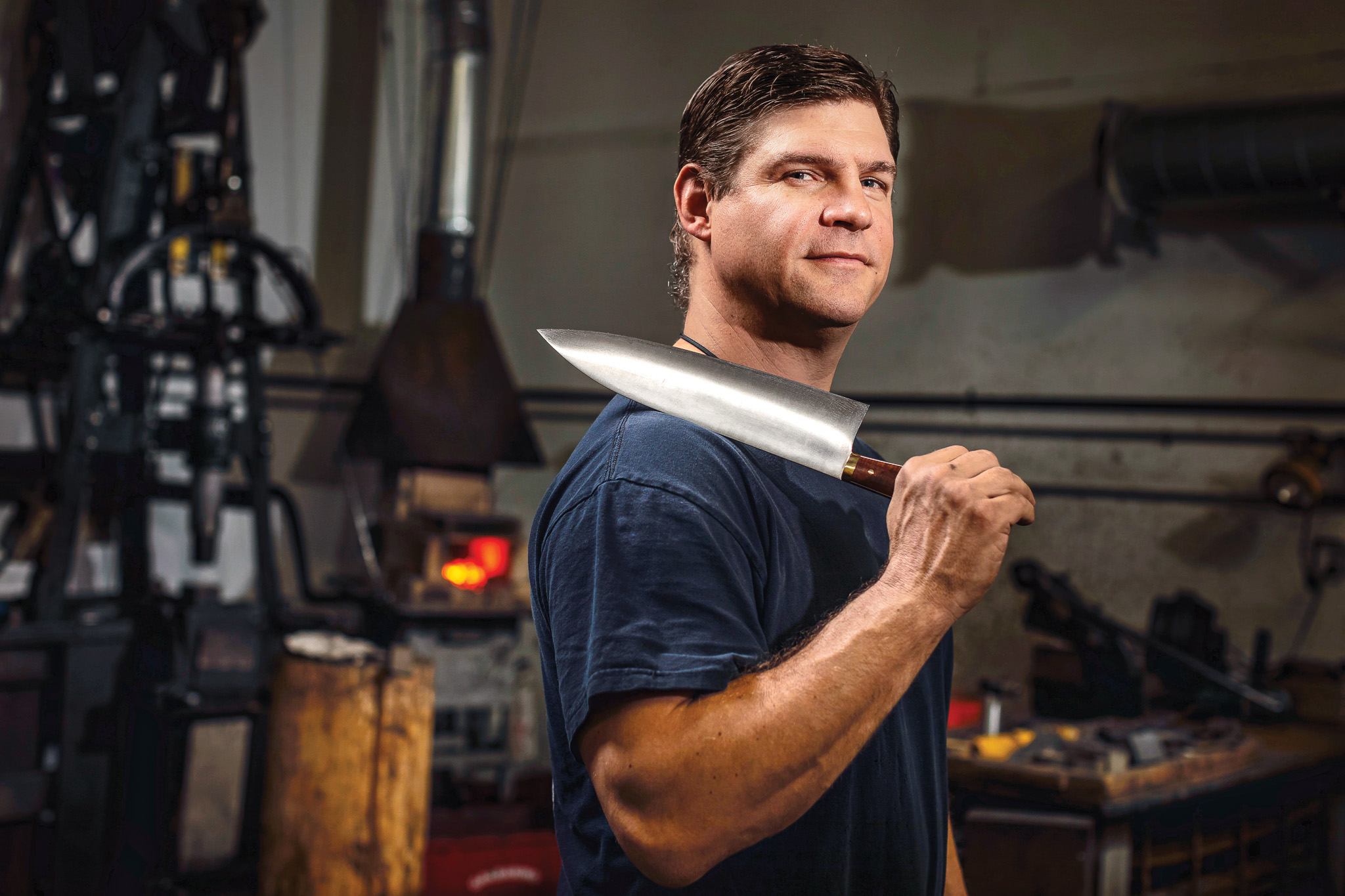
In the early 1980s, Les de Asis owned Pacific Cutlery, based in California. He imported knives from Japan, but in only a few years he had to file for bankruptcy. The dollar fell and the currency imbalance cost them. California’s sky-high utility costs hurt their manufacturing. Plus, the knife laws in that state are nearly as strict as its gun laws. In the early days, de Asis was (and still is) known for his butterfly knives, or balisongs. Once Californa made balisongs illegal, it became clear to de Asis that he needed to move. So he changed the company’s name to Benchmade and moved to Portland, which, according to Collver, was an obvious choice.
“Why Portland? It’s just perfect. In two hours you can have everything, from mountains to deserts to oceans,” says Collver. “Yes, it rains a lot, and that’s why people here tend to be more gear geeks. You have the REI guys and the Cabela’s guys. Both want to be dry.”
But needing to be dry doesn’t explain why someone might pay $300 to $400 for a premium Benchmade knife. Collver has an answer to that too. “I think we’re moving away from a disposable economy,” he says. “Especially when it comes to things like knives.”
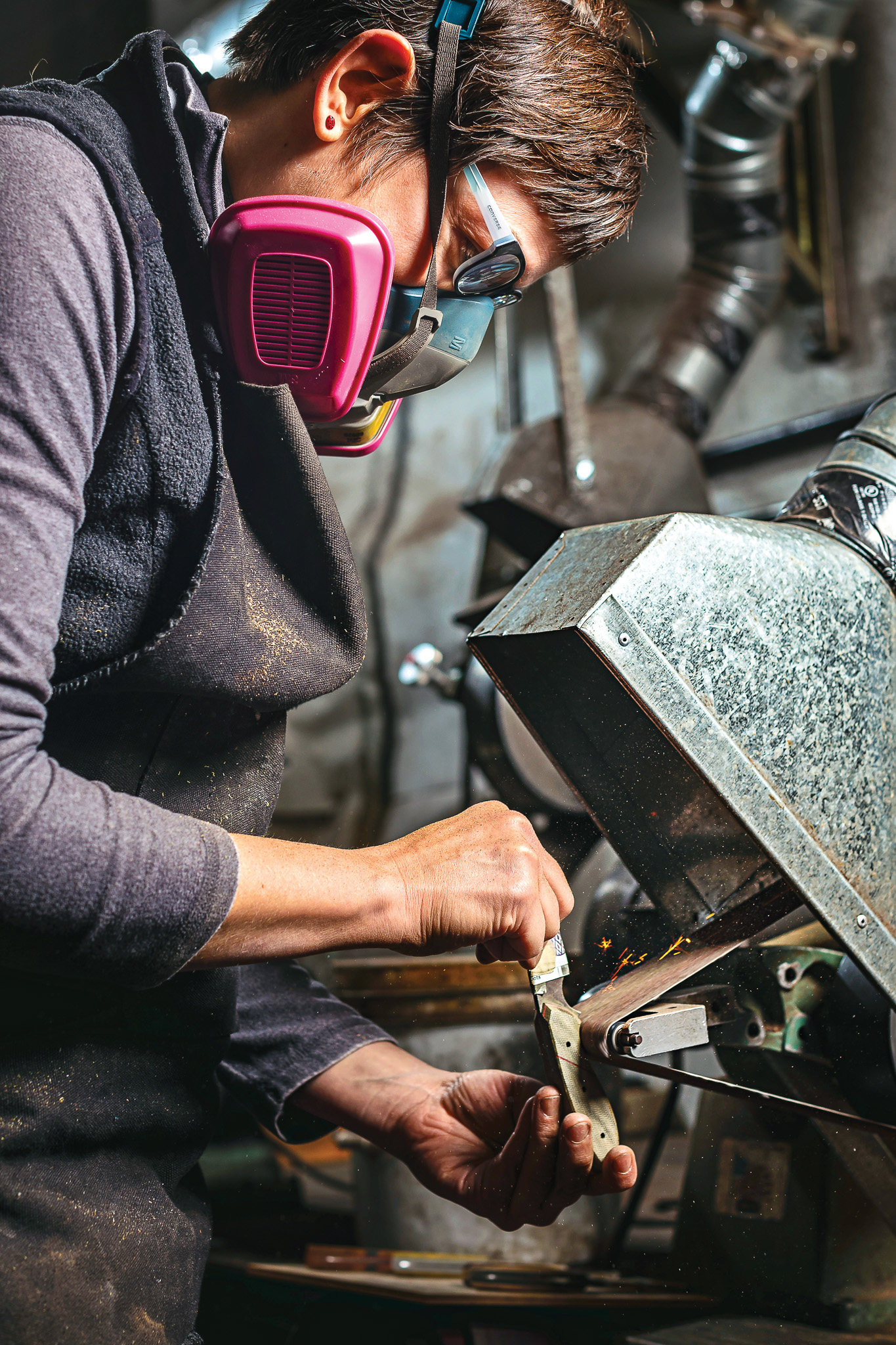
Many Benchmade customers were introduced to their first knives through the military. Automatic knives like the Infidel and SOCP Spear Point are designed and built with input from American Special Forces. Because all Benchmade knives are now produced stateside, it’s not a problem producing for the military. But there’s more to domestic production than just military contracts, which is why, in 2008, the company decided to move manufacturing to Oregon City.
They were still sourcing some parts from Taiwan, but they purchased the actual machines from the companies that had been producing the components and had the dies shipped over. Once they did that, the demand exploded, says Collver. “Knives are inherently personal.”
To prove his point, we go to the warranty department. Once the door shuts, it’s eerily quiet compared to the factory floor. Collver pulls out something that may have once resembled a knife. It had taken a bullet, and the survivor sent it back to them hoping Benchmade might be able to fix it. They couldn’t. Even so, says Collver, “If we can’t fix a knife, owners still want it back. Like I said, there is a bond there.”
Andrew Gritzbaugh, Gerber’s vice president of marketing, agrees. “People are okay with their jeans or computers being made overseas,” he says. “But if it’s a knife, it needs to be made in the USA. Oregon culture still has a very pioneering spirit. Yeah, the city may be techie and hippie, but there are plenty of sportsmen, tradesmen. Tools are a part of that self-reliant attitude. Our core consumers care. Guys give a crap where their knives are made.”
Gritzbaugh, himself an Army infantry veteran, says Gerber is the main knife supplier to the military. The MP600 multi-tool is issued to nearly every service member and is 100 percent made in Oregon. Even so, Gerber still has to import product to meet demand. He says it used to be double the cost to produce knives domestically, but now it’s closer to 30 percent.
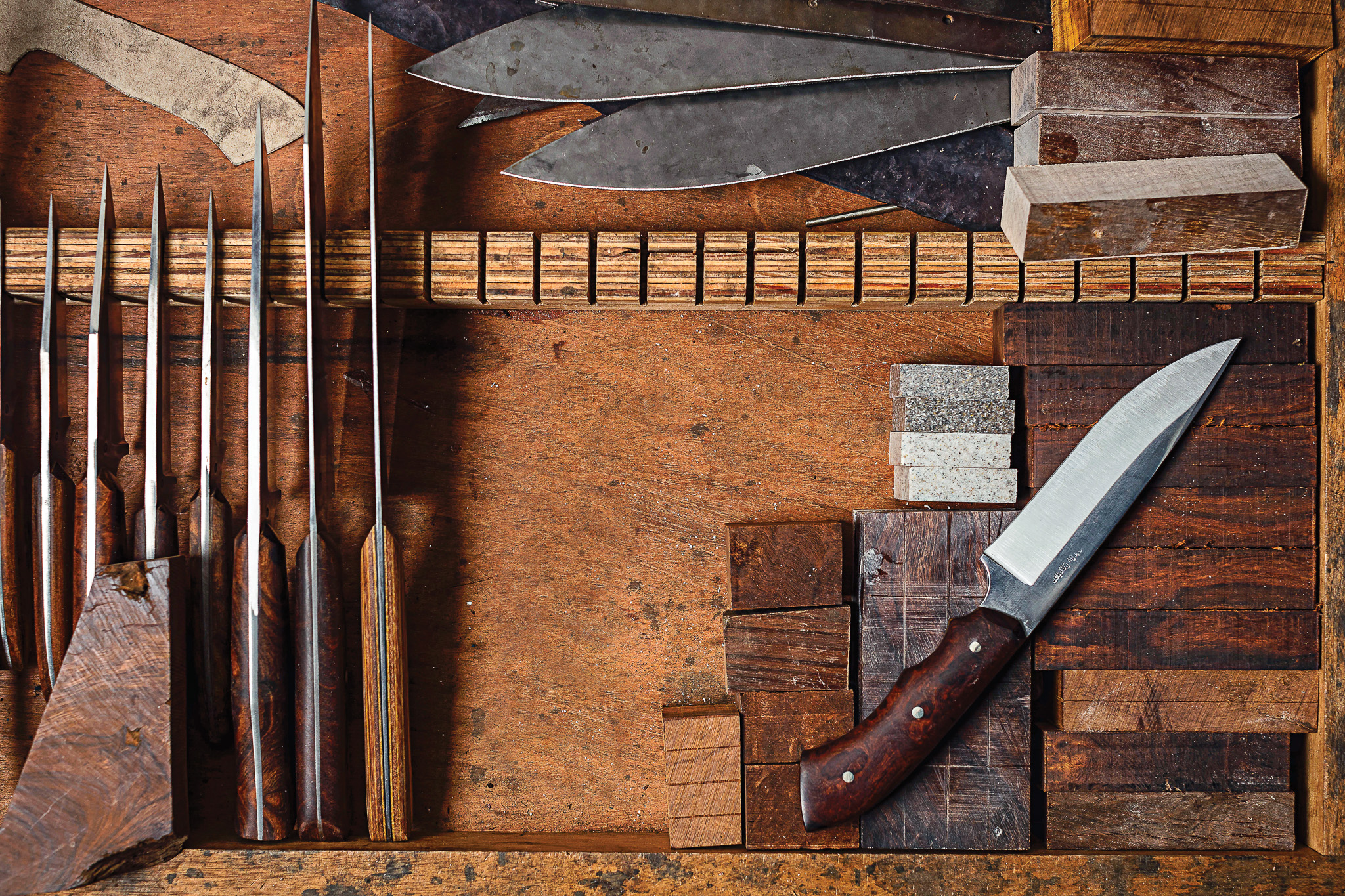
Increasingly, domestic production is becoming more appealing to both consumer and producer. “There are so many uncontrollable variables when you produce overseas,” he says. “Shipping costs and time to market is a real killer. There are political climates and ever-shifting tariffs.” And then there is control over the final product. “There is something to be said about an issue arising in the production process and having a group of engineers walk down to the floor, look at the problem, and then figure it out. Try doing that over the phone to someone overseas, and throw in a significant language barrier.”
While Portland is home to big-name knife companies, its pioneering roots and liberal knife laws have attracted a number of smaller outfits who cater to those looking for unique and artisanal knives from bladesmiths like Murray Carter.
An Alien of Extra-Ordinary Ability
On the drive from Oregon City to Hillsboro to meet Carter, I get caught in a snarl of Portland’s famed traffic. It takes 30 minutes to go 10 miles. The congestion eventually breaks up, and it appears the clouds might too.
I meet Carter at an industrial business park. He’s at the end of a row of small office storefronts with giant garage doors attached. At first glance, he looks like any western Oregon working-class guy who might be watching the Seahawks at a bar, his scarred hands wrapped around a beer. Look a little closer, though, and you’ll catch sight of the knife he wears on a lanyard around his neck.
When Carter, now 48, was growing up in Nova Scotia, he had no idea what life had in store—all he really knew was that he wanted to be an American. “I never really identified with Canada,” he says. As a kid, he’d stay up late watching American television stations. “My heart would melt around midnight when they would go off the air and play the national anthem and all you’d see is the American flag waving.”
In his youth, Carter nibbled around the edges of interests, never really sinking his teeth into anything—until he found martial arts. He studied karate, and when he was 18, he visited Japan to immerse himself. While living in Kumamoto, he borrowed a friend’s scooter and wandered through the back alleys and roads. That’s where he came across a display window filled with new knives. He walked into the shop. The owner and master bladesmith, Yasuyuki Sakemoto, greeted him. Knowing only a few words of Japanese, Carter did his best to express his interest, which was sincere. He was invited back. A short time later, fate would choose a path for him.
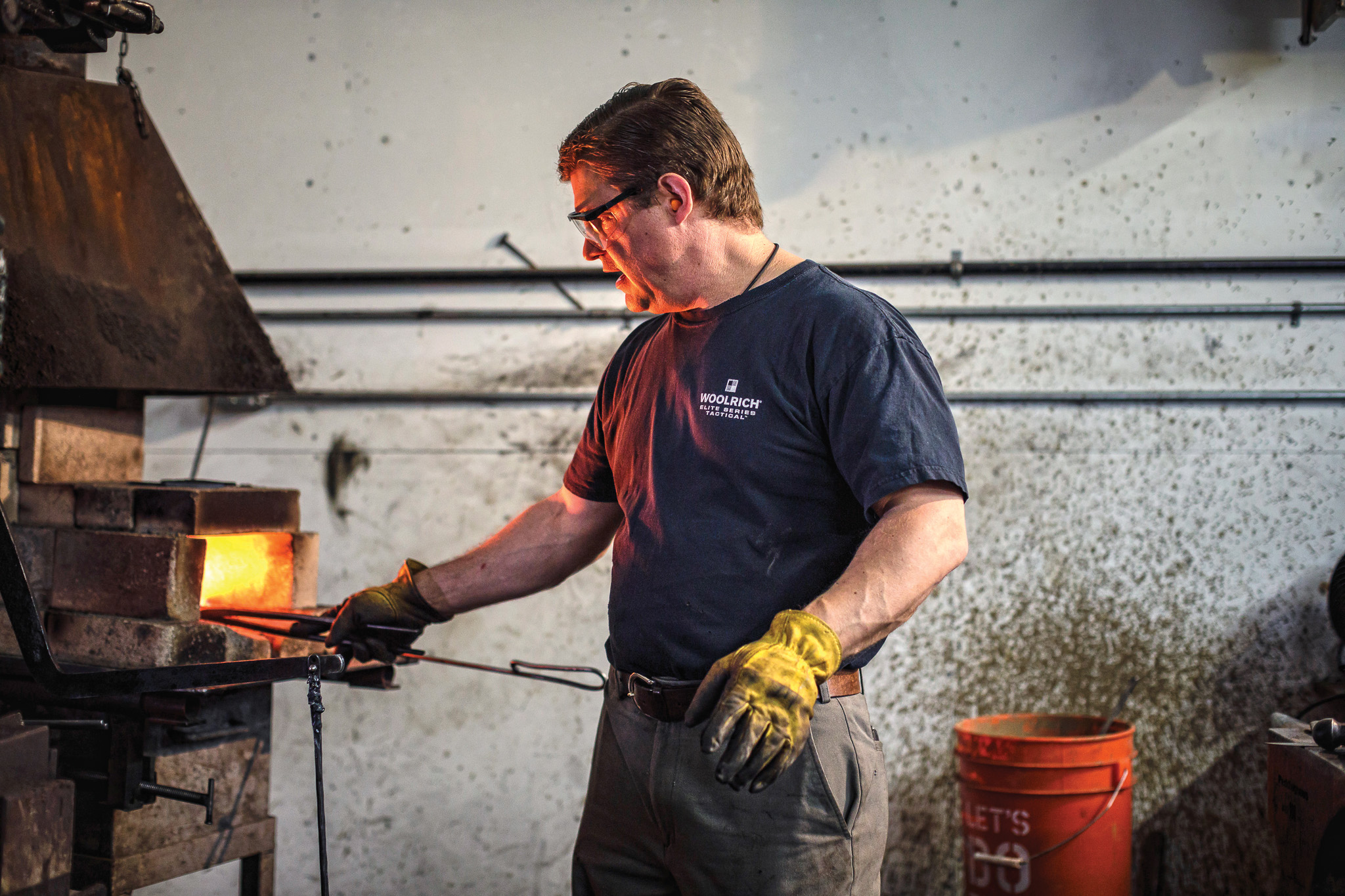
One day at karate, Carter came down hard on his knee, dislocating it. It would take months to heal, months without practice. As he recovered, his instructor tossed a Japanese language textbook at him while he lay on his bunk. He studied the language and went back to Sakemoto’s shop again and again.
In Carter’s front office, there is a display case packed full of neck knives, kitchen knives, all-purpose knives—all of them unique.d I want them all. There are a couple of drawings by his kids, an old microwave, and a sign, written in Japanese. Roughly translated by Carter, it reads: If you want to be content in life, you have to be a man of action, which will give you results and any result, be it success or failure, will still bring you contentment because at least you lived out that dream. This is Carter’s life.
Carter likes to say he went to Japan with a backpack and came home 18 years later with a wife, four kids, a dog, and the knowledge of 16 generations of bladesmiths. He applied for U.S. citizenship, which took a decade, but he got it. On his green card are the words “An Alien of Extraordinary Ability.” His skills at forging blades had led to his dream of becoming an American.
When looking for a place to settle, he knew he wanted to be on the West Coast. Washington was too close to Canada, and California wasn’t knife- or gun-friendly. In 2000, he attended the Eugene knife show to get a feel for the area, and he liked it. With $10,000 to build a shop, he settled in Hillsboro, 20 miles west of downtown Portland. In thinking back on it, he says, “I liked that self-reliant, Western mentality.”
As his business, Carter Cutlery, grows, he is able to pull from Portland’s creative and skilled labor pool. Keeping with the Japanese tradition, he has three apprentices who build their own knives under his direction. Whereas in some professions employees have to sign non-compete agreements, Carter sees the apprenticeship system as more about advancing skills rather than the brand. Besides, as long as Carter works, he’ll always be a couple of steps ahead of his students. “I once asked my teacher in Japan why he was sharing all this information with me.” Carter says. “He put his arm around my shoulders and said, ‘Knowing how to make a knife like me doesn’t mean you’re ever going to be able to make a knife like me.’ ”
“We don’t strive for absolute perfection. We strive to improve. We’re artisans, not artists. We’re making a living doing this.”
—Murray Carter
I watch as Carter forges a jeweled Damascus steel blade from a billet of metal, which to the untrained eye looks like a chunk of steel from a recycling bin. He heats the billet red-hot and then cranks up his hammer forge. I realize then why his shop is at the far end of the industrial park. I feel the pounding of the hammer from my thinning hair to my toes. He heats again, hammers some more, quenches, tempers, grinds, and polishes.
Eventually the knife will receive a custom handle, perhaps from a salvaged wine barrel or even scraps of material from a decommissioned spy plane. (I’m not kidding.) He lets his handle makers decide. Of all the steps, tempering is most important. Once a blade is quenched and fully hardened, it is heated once again to remove brittleness and make it usable. “Until that point, it’s only a $30 piece of steel,” says Carter. “Once it’s quenched and tempered, then it’s an $800 knife. All those alchemists who wanted to turn copper or steel into gold should have just been bladesmiths.”
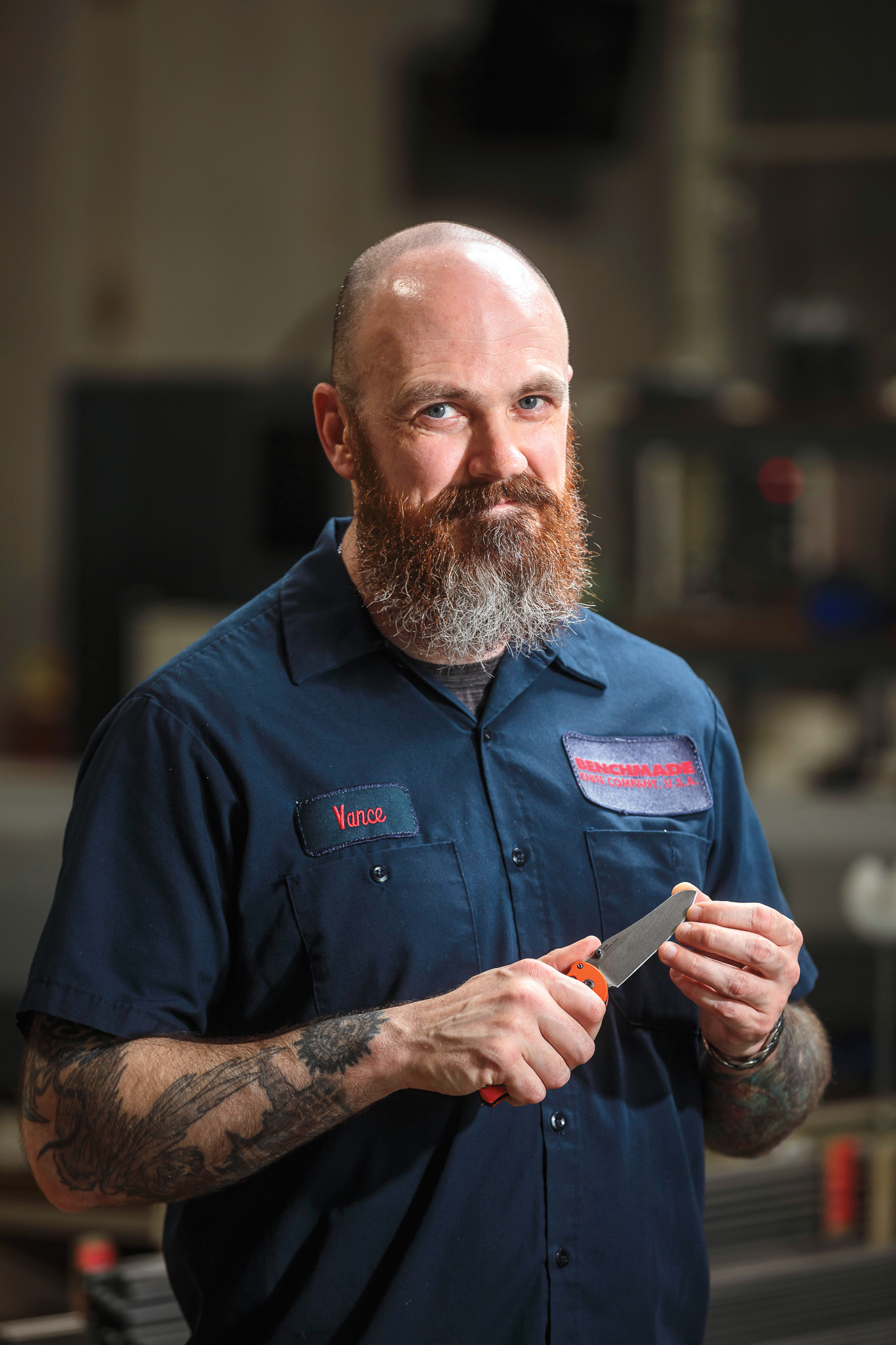
Typically, Carter runs batches of 50 to 100 knives, producing about 160 blades every month. “We don’t strive for absolute perfection,” Carter admits. “We strive to improve. We’re artisans, not artists. We’re making a living doing this.”
Near the end of the day, Carter opens the garage door, revealing a sky that’s a deep blue with cottony clouds. We step outside, squinting at that weird yellow thing in the sky. I get the feeling that if it weren’t for the rain, everyone would want to live here.
New fads will always pass through Portland. As they become mainstream, they’re hip no more. But as long as there are people who rely on a keen edge to unzip a deer or fillet a salmon, Portland’s knife makers will always be cool.
Ideal Carry Knives
WORN INSIDE his hoodie or out, Murray Carter’s neck knife is always within easy reach. It’s a fixed-blade, as opposed to a folding pocketknife with an obvious weak point at the hinge. It provides a unique tactical advantage, should the need arise, but most often, it’s a way to display his craft, to get the conversation started. He ends up giving away many of those knives right off his neck. It may not be great for the bottom line, but then again, that’s how Joseph Gerber began his business, which started all of this.
As a self-defense instructor, longtime Benchmade employee Vance Collver has put some thought into why he carries a modified version of Benchmade’s Triage. He likes the blaze-orange color, glass breaker, strap cutter, and blade, of course. “It’s a very practical, everyday knife,” he says. And if he ever needed to use the knife to defend himself, he’d rather have a jury of his peers see that knife instead of an imposing switchblade straight out of Ponyboy’s leather jacket.
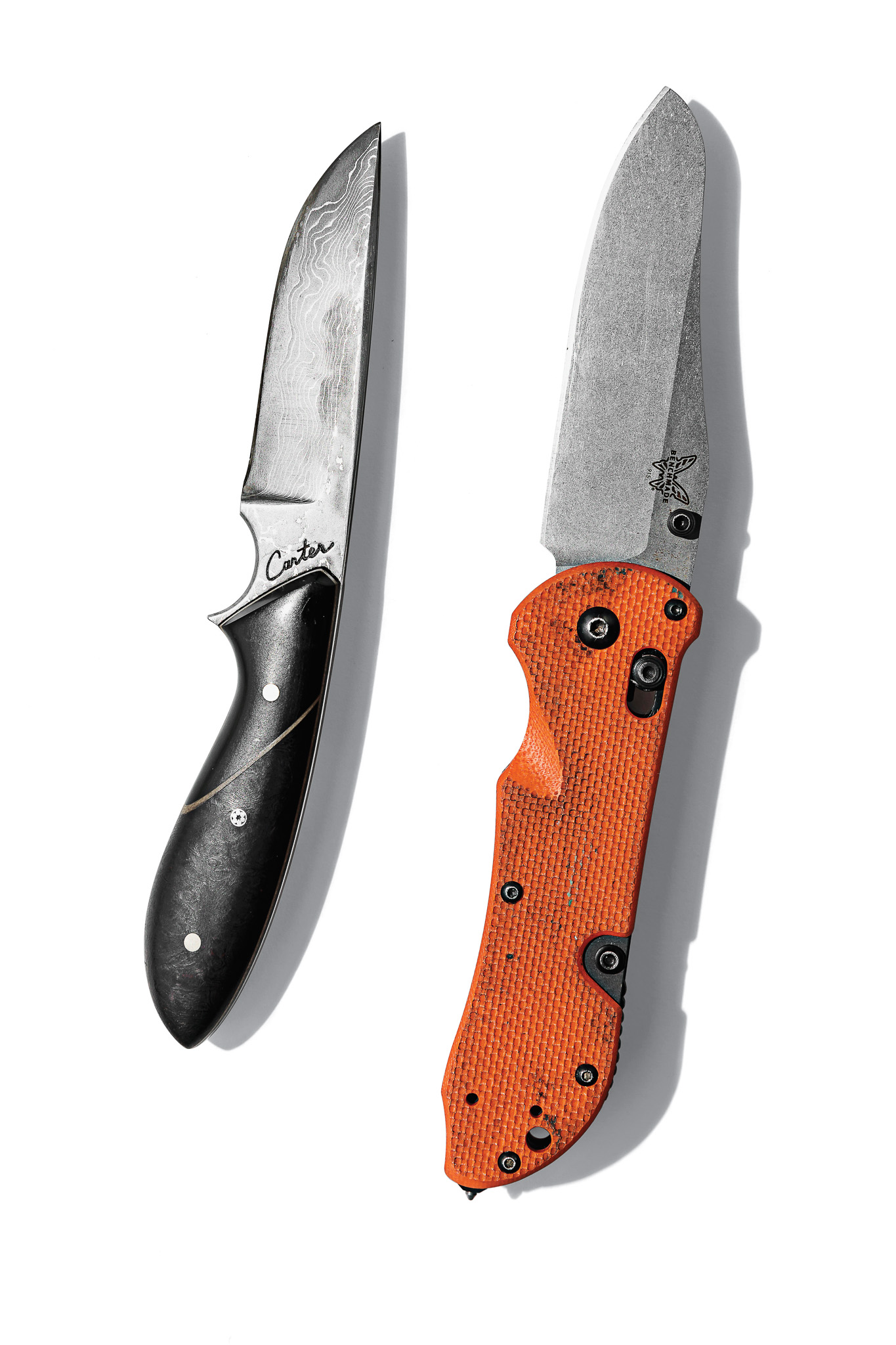
By the Numbers
NINETY-SEVEN PERCENT of the jobs in cutlery and handtool manufacturing in Oregon are in the Portland area. These statewide stats are essentially Portland stats, says Nick Beleiciks, an employment economist with the Oregon Employment Department.
| Oregon’s: | Wages | Companies | People Employed | Annual Salary |
|---|---|---|---|---|
| Knife Industry | $138 million | 36 | 2,200 | $63,000 |
| Fishing Industry | $17.2 million | 136 | 266 | $65,000 |
| Wineries | $100 million | 295 | 3,000 | $33,000 |
This story originally ran in the August 2017 issue of Outdoor Life. Read more OL+ stories.
